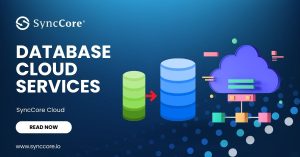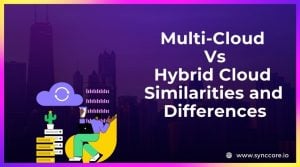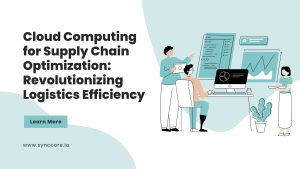Table of Contents
Role of Virtualization in Cloud Computing
The rapid adoption of digital transformation initiatives has highlighted cloud technology and raised questions about the role of virtualization in cloud computing.
Virtualization and cloud computing are inextricably linked, frequently collaborating to deliver compelling services. However, while they are often interdependent, they are not interchangeable. Virtualization technology converts physical hardware into virtual resources, whereas cloud computing delivers virtualized resources over the internet and on demand.
Understanding the role of virtualization in cloud computing is critical because it can help you make better decisions about which cloud or virtualization solutions will work best for your business.
What Exactly Is Virtualization?
Virtualization, also known as the foundation of cloud computing, refers to the creation of virtual resources such as servers, virtual network switches, and virtual storage devices on top of computer hardware. It enables the division of hardware elements on a single computer (for example, processors, memory, and storage) into multiple virtual computers. These virtual computers are frequently referred to as virtual machines (VMs). Despite only using a portion of the foundational computer hardware, each VM can run its operating system and behave like an independent computer.
What is Cloud Computing?
You’re probably familiar with the cloud computing model. Cloud vendors provide pay-as-you-go IT resources over the internet. This relieves businesses of the burden of purchasing, owning, and maintaining physical servers and data centers. Instead, they can use computing power, storage, databases, and other resources as needed. As a result, cloud computing provides numerous advantages, including cost savings, increased data security, and faster development (you can spin up new cloud computing instances in seconds).
Some Key Differences Between Virtualization and Cloud Computing
Virtualization is a technology that enables businesses to create a large number of simulated environments from a single physical hardware system. Cloud computing is a methodology or set of principles and approaches that allow for the on-demand delivery of compute, network, and storage infrastructure resources, platforms, applications, and services to users.
Virtualization makes packaged resources available to specific users for a specific purpose. Cloud computing makes variable resources available to groups of users for a variety of purposes.
Cloud computing is template-based, whereas virtualization is image-based.
What are the Various Kinds of Server Virtualization?
Virtual servers are a key component of modern hybrid ecosystems and play an important role in cloud computing.
Hypervisor
A hypervisor, also known as a VMM (virtual machine monitor), is a control layer that exists between the hardware and the operating system. It manages and supervises the virtual servers that have been installed, detecting traps, responding to privileged CPU instructions, and handling queuing, dispatching, and hardware requests.
Paravirtualization
Traditional Hypervisor virtualization is enhanced by paravirtualization. It also employs a Hypervisor layer, but it allows VMs to have an interface that is similar to the underlying hardware. It boosts the performance of the VM by modifying the guest operating system. Paravirtualization is demonstrated by VMware and Xen.
Full Virtualization
Full virtualization differs from paravirtualization and traditional Hypervisor virtualization in that it allows multiple guest operating systems to run in complete isolation on a single host OS. It completely simulates the underlying hardware, allowing any software that can run on the hardware to run in the VM. Full virtualization can be useful in a variety of situations, such as running experimental new code alongside older versions while using separate VMs.
Other types of virtualization exist in addition to server virtualization, such as:
Operating system virtualization
This occurs when the VMM virtual machine is stalled on the host operating system rather than directly on the hardware system. The primary application of operating system virtualization is to test applications on various OS platforms.
Storage virtualization
Physical storage from multiple network storage devices is grouped here to appear as a single storage device. Storage virtualization is typically used for backup and recovery.
Can You Leverage Virtualization Without Cloud Computing?
Yes, Many businesses use virtualization without using cloud computing. The main advantage of virtualization over non-virtualization is that it allows businesses to make better use of available server capacity and maximize the servers they already have.
Virtualization without cloud computing, on the other hand, is becoming increasingly rare these days. Why? Because it often takes days or even weeks for each VM to be approved internally and made available to users. In other words, virtualization without cloud computing often limits a company’s agility, and many businesses are unwilling to take this risk in an increasingly competitive business environment.
Can You Have Cloud Computing Without Virtualization?
While it is true that cloud computing cannot exist without virtualization, this does not mean what most people believe. Virtualization is essential to the cloud computing model and industry; the business model relies heavily on virtualization to deliver on-demand IT resources at scale and affordably. Non-virtualized IT resources, on the other hand, can be accessed via the cloud.
Some providers offer cloud computing without it for companies that prefer not to use virtualization. This service is classified as Infrastructure as a Service (IaaS) and is not widely used, but it does exist. So, what is it that makes some customers want cloud computing without virtualization? The primary use case is performance and low latency, where any virtualization overhead is unacceptable. Another reason could be that the company wants to build and manage (have complete control) its private cloud while having it hosted by an internet provider.
Despite their rarity, these services are critical for the businesses that require them.
Cloud Computing With Virtualization
The most common approach is to use virtual machines in the cloud. It provides all of the advantages of virtualization and cloud computing, including:
Resources can be quickly commissioned and decommissioned. This eliminates the need to purchase large amounts of spare capacity for the occasional peak period.
The model is typically more cost-effective because you only pay for the resources you use. Because you don’t need to buy your servers, your CapEx costs are also reduced or eliminated.
Final Thoughts
Virtualization is undeniably important in cloud computing and provides numerous benefits. You may choose to embark on a virtualization journey without the use of cloud computing to maximize your IT resources while maintaining complete control over them. This is especially true if you have stringent security requirements that a public cloud may not be able to meet. You may also decide to use cloud computing to reduce costs and increase agility, or if you have a limited number of IT staff to manage your IT landscape.
Read More
Monitoring as a Service in Cloud Computing: Quick Guide
How Cloud Computing is Changing Management



